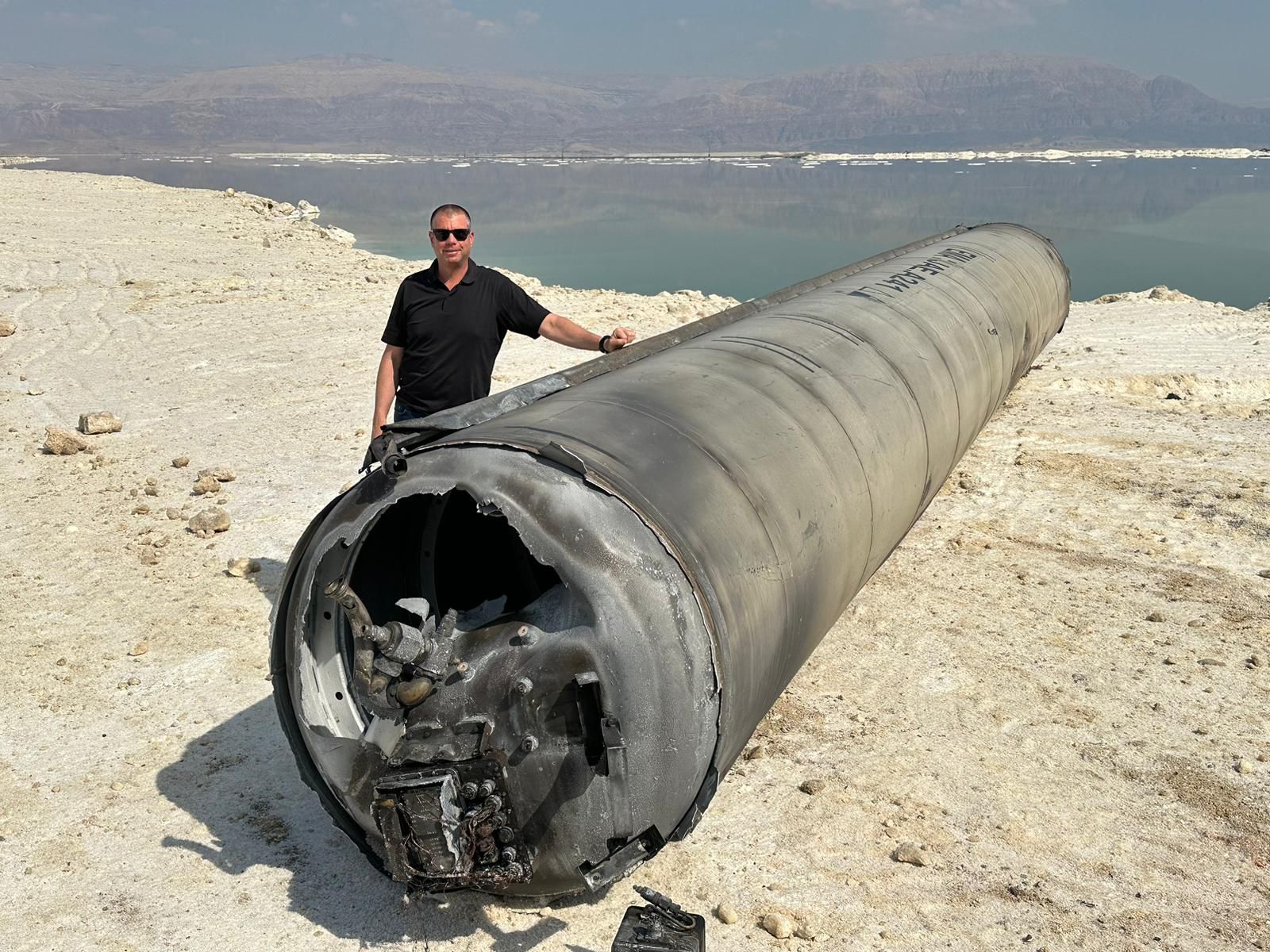Iranian missile parts are being discovered around Israel, and some of them are not the ones that were shot down recently.
Their detachable warheads successfully hit their targets after separating from their launchers (or boosters). The Israeli military is now collecting the debris and plans to study the ballistic missiles to gain insight into Tehran’s defense technology.
A report in the hawkish and hardline Jerusalem Post noted how the missile remains in the Judea desert are “nearly intact,” supporting the conclusion that they were not hit by anti-air missiles.
Otherwise, the missiles would have had punctures and strike marks on their cylindrical bodies, with other pieces of debris or shrapnel being strewn around the crash site. This is not visible in the photos.
Iran on April 14 launched a ballistic missile, drone, and cruise missile barrage on Israel directly from its territory in retaliation to the strike on its embassy in Damascus that killed senior officers of the Islamic Revolutionary Guard Corps (IRGC).
This was the first direct clash between Iran and Israel. Tehran has usually been striking Israeli targets with its proxy groups. Iran also captures or attacks Israel’s merchant vessels in response to Tel Aviv’s air strikes in Syria or assassinations of Iranian nuclear scientists or officials. Israel has put the number of Iranian projectiles at more than 300, most of which it nearly shot down.
Iranian Missiles In Israel
Jerusalem Post said that “despite the IDF claims that 99 percent of Iranian missiles sent on April 14 were intercepted”, missile parts are being found in the “Arad area of the Judean desert.” This is beside “similar missiles being discovered in the Dead Sea area” immediately after the Iranian missile volley. Some missiles were also found in Iraqi Kurdistan and Jordan.
The report goes on to pose the question: “How are missiles on the ground still being found especially after the IDF spokesperson stated Israel’s air defense intercepted 99 percent of them?”
A few days after the attack, reports quoted an IDF spokesperson admitting that “a few” ballistic missiles had “evaded” Israel’s air defense and caused “minor damage” at its Nevatim air base. The base is host to the Israeli Air Force’s F-35I fighters. Subsequent satellite images also showed a “damaged taxiway” and a wall; both were later repaired immediately.
The debris of the ballistic missiles indicated that they were the Imad and the Hybar Shekhan. The report said each missile “contains rocket engines that provide it with the necessary speed to exit the atmosphere, large fuel tanks designed to allow the engines to travel long distances, a control system box, and a warhead, which contains the explosive material.” The Imad is an advanced version of the Shehab 3, based on the North Korean Rodong.
The Imad has a “relatively sophisticated” 750-kg warhead, “capable of causing damage even to protected structures.” The missile’s fins allow it to hit the target accurately and maneuver in an attempt to mislead the defense systems.
The missile reaches about 1,700 km and is designed to hit the target accurately by 10 meters. Thus, without stating directly, the report implied that the missile’s remains were parts that were meant to be discarded. Usually, after the ‘mid-course phase,’ or reaching the ballistic ‘arc’ in the parabolic trajectory, the missile discards its booster rocket (the first stage). What was found in the deserts are, therefore, the booster sections that are meant to fall back to earth.
The report quoted an expert of the Iranian missile program, Tal Inbar, who had said the “warhead is the payload that the missile carries, the whole purpose of which is to put it into orbit on the way to the target.”
“The engine accelerates the missile, and it flies to Israel on a ballistic trajectory, at a maximum height of 110-140 km above the ground. Somewhere over western Iran or over Iraq, the warhead separates from the heavy and clumsy missile casing that carries it so that it can easily maneuver to the target. The warhead is the dangerous part that needs to be intercepted. The rest of the missile reaches Israel without fuel, and as long as it falls into uninhabited territory, it will not cause damage.”

Conclusion
The missiles launched towards Nevatim and other targets in the Negev “fell in the South but far from the targets they were aimed at.” The report pointed out that the IDF will “slowly collect” the “metal scraps” from the Negev desert for “research and analysis of the enemy’s capabilities.”
This, therefore, leaves three possibilities. The debris found in the desert and the sea are of the missiles that got through Israel whose warheads were either
- Intercepted
- They fell far from the targets and must have been ignored by Israeli air defenses after calculating their trajectories were not aimed at critical targets or
- It struck around the targets — like the taxiway of the Nevatim air base.
It is not yet clear which of these scenarios are relevant.
- The author can be reached at satamp@gmail.com
- Follow EurAsian Times on Google News




